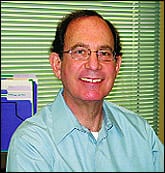 |
The Chinese proverb, “May you live in interesting times,” has never been more pertinent than it is to today’s aesthetic medicine industry. Controversies abound in all aspects of the field, ranging from safety and efficacy of new procedures (and even some old ones) to the qualifications and abilities of those who have come into practice via nontraditional routes. A sampling of the issues that many of you are grappling with follows:
Alternatives to surgery. Almost nothing seems to have aroused the passions of the plastic surgery establishment like the newer, less invasive methods that have come onto the scene in the past 5 to 10 years. From mesotherapy to endermologie to the lunchtime facelift, some of you believe that these treatments can be very effective—not to mention economical and less intrusive on patients’ lives—whereas others of you think that at best they are a waste of time and at worst they border on hucksterism. PSP has consistently been on top of these procedures, and this issue is literally bracketed with commentary on them, with coverage in our Feedback letters department and The Last Word opinion piece.
Breast-augmentation choices. Remember the good old days—that is, last year—when the only choice you had to make before performing a breast-augmentation procedure was the size of the saline implants to use? Well, that may be an oversimplification, but a couple of watershed events—the FDA’s reapproval of silicone gel implants and the reemergence of fat transfers to the breast—have simultaneously expanded your options and forced you to make difficult decisions. PSP’s admittedly unscientific reader’s poll, as well as other sources, tells us that many of you are still reluctant to use silicone in breasts, or are at least waiting until there is more experience with the new implant models. And although fat grafting may not be the pariah it once was, I don’t foresee a groundswell of activity until much more work is done to prove its efficacy and safety.
Those “unmentionable” procedures. PSP has historically shied away from covering surgical modification of sex organs. But in the past year we did provide an overview of labiaplasty, and in 2008 we plan to give more attention to the vaginal area and run at least one piece on penile surgery. The fact is that many of you perform these operations, and some of you have even made them your specialty. This couldn’t happen only as a result of advertising and public relations—I believe that there’s a sizable demand for these procedures, and I predict that 10 years from now, they will be considered mainstream.
Turf wars. Finally, it must be acknowledged that we are a long way from resolving the differences among the several groups of people who practice aesthetic medicine. I’m not about to take sides here, or even dig very deeply into this right now, but I have just one request of my “plastic,” “facial plastic,” and “cosmetic” friends: In the plaintive words of Rodney King, “People, I just want to say, you know, can we all get along?” Please?
And now I must tell you this: After almost 2½ extremely enjoyable years as editor of PSP, I am departing to pursue another opportunity. I’ll still be toiling in the aesthetic medicine fields, however, and I hope to renew acquaintances with you at meetings, in your practices, or by electronic means. I thank you for your hospitality and wish you well.
Michael J. Block
[email protected]




